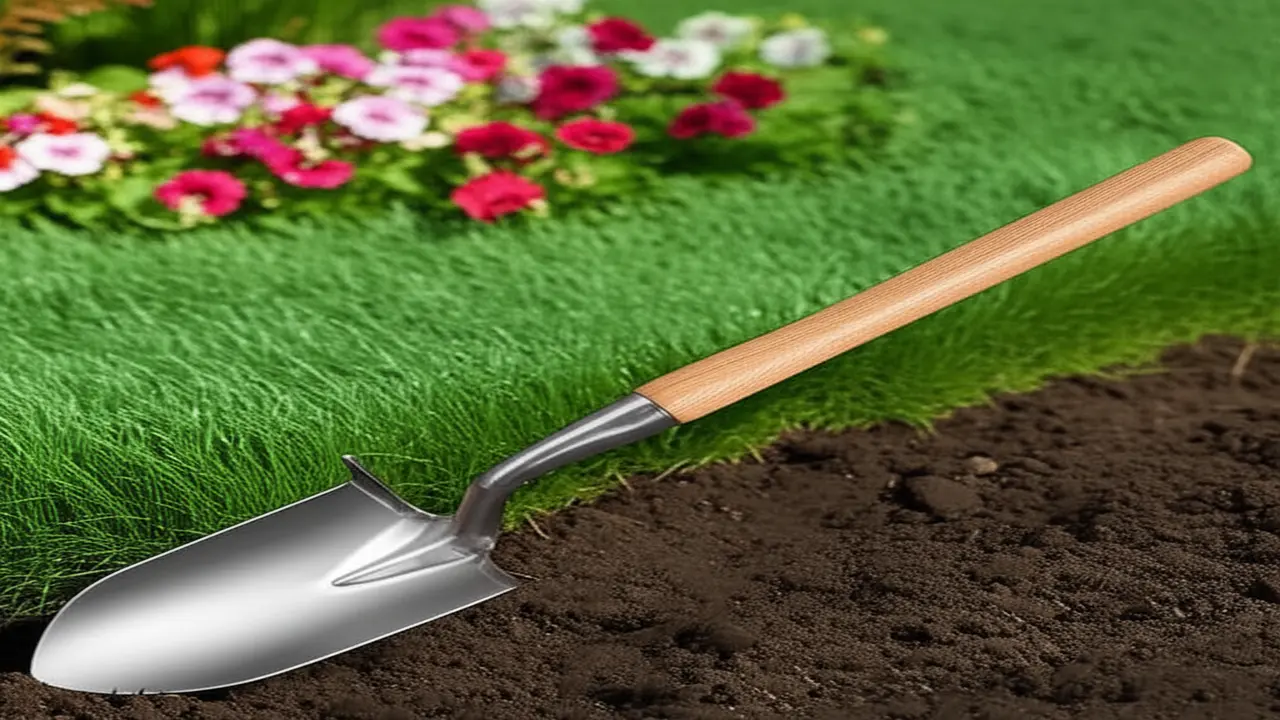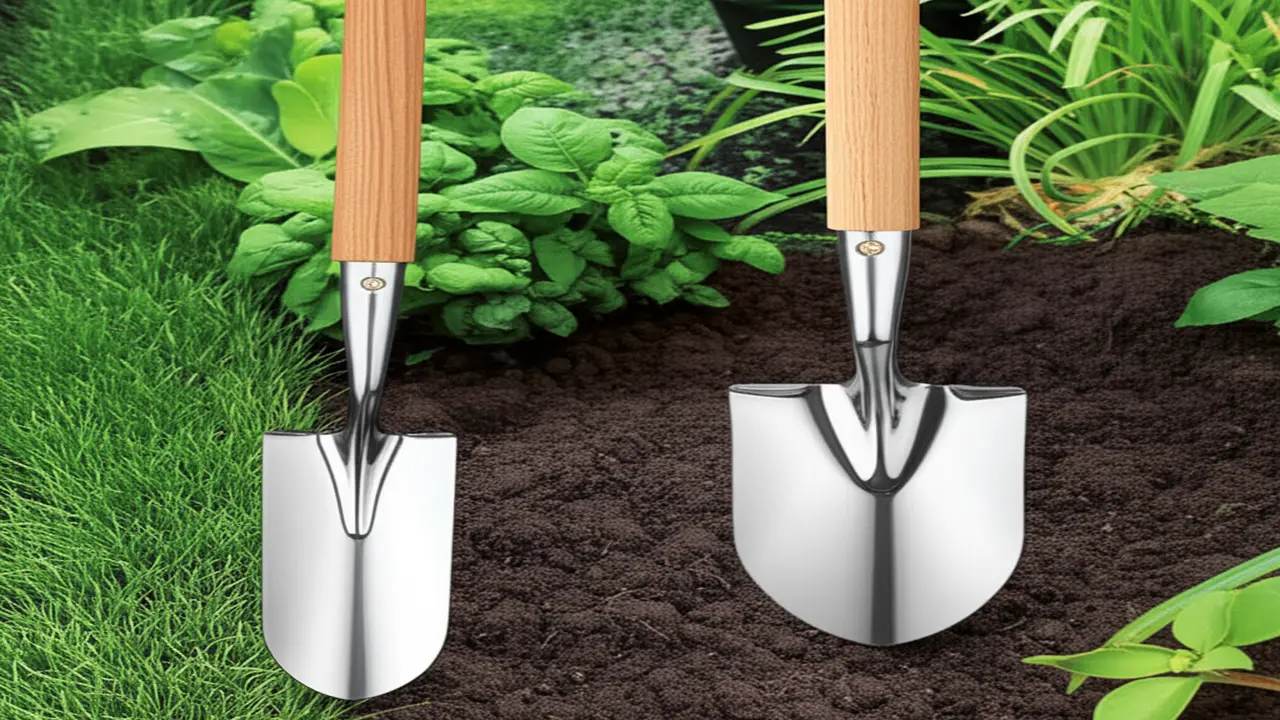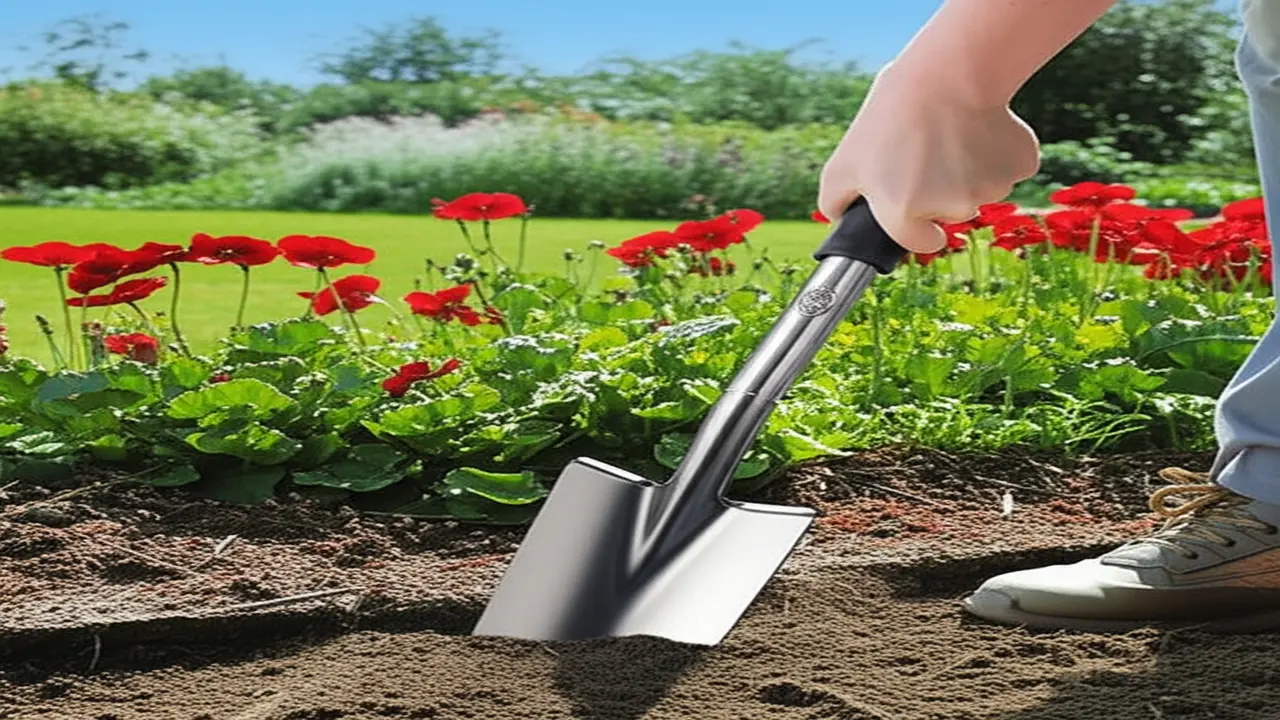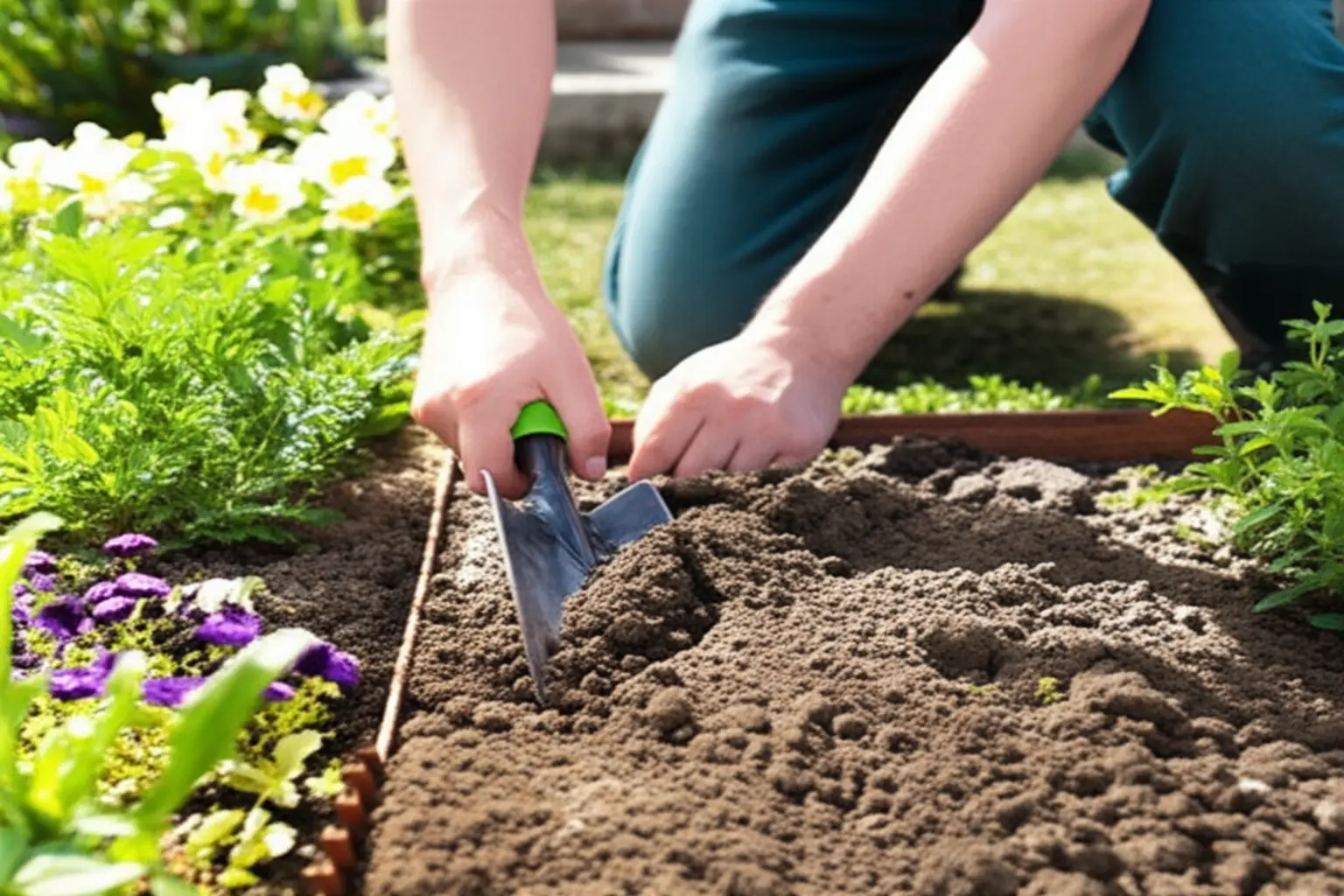
1. What is a Border Spade? Definition and Characteristics

2. Border Spade vs. Digging Spade: Key Differences Explained
– Size and Weight: Border spades are generally smaller and lighter than digging spades. This makes border spades easier to handle for precision work, especially along garden edges and flower beds, while digging spades are bulkier to tackle tougher soil.
– Blade Design: The blade of a border spade is narrower and has a flatter tip designed for cutting clean edges and shaping borders. Digging spades feature a broader, curved blade suited for breaking ground and digging trenches.
– Shaft Length: Border spades often have shorter shafts to provide better control and maneuverability in tight spaces. In contrast, digging spades include longer handles to leverage force for deep digging.
– Ideal Soil Types and Tasks: Border spades excel in light to moderately compacted soils and are ideal for tasks such as edging, transplanting, and fine soil cultivation. Digging spades perform best in dense, heavy soils where intensive digging or turning over soil is required.
Comparison Table:
| Feature | Border Spade | Digging Spade |
|—————-|———————————–|———————————-|
| Size | Smaller, lightweight | Larger, heavier |
| Blade | Narrow, flat tip for precision | Broad, curved for digging |
| Shaft Length | Short for control | Long for power |
| Best Uses | Edging, shaping, light soil work | Digging, trenching, tough soils |
Selecting the right spade depends on your gardening needs: for detailed border work, a border spade is indispensable. For general digging and soil turning, the digging spade remains the go-to choice. Familiarizing yourself with these differences not only improves efficiency but also enhances the longevity of your tools.
For more insights and product recommendations, you can explore our guide on the best garden spades 2025. This resource provides expert reviews that help you make informed decisions tailored to your specific gardening needs.

3. Why Choose a Border Spade? Advantages and Benefits
Additionally, border spades are generally lighter, reducing user fatigue during extended work sessions. This ergonomic benefit helps maintain control and efficiency when performing repetitive motions. Their design also ensures optimal performance in established or restricted garden areas where a larger spade might be cumbersome.
Gardeners who choose border spades enjoy both functional convenience and effective soil management, improving overall garden aesthetics and health. For insights on complementary gardening tools that can enhance your work, consider checking guides like best hand cultivators which help loosen soil around plants with minimal disruption.
4. Primary Uses of a Border Spade in the Garden
– Working within flower beds and borders without damaging adjacent plants, allowing neat cultivation and soil turnover.
– Transplanting plants and bulbs carefully, preserving root structures by minimizing soil disruption.
– Dividing perennials efficiently, encouraging healthier plant growth and propagation.
– Loosening compacted soil in tight spaces such as raised beds where larger tools cannot fit.
– Edging along garden paths or borders, creating clean separations that enhance overall garden aesthetics.
– Weeding tap-rooted plants, where the pointed blade facilitates deep root removal without extensive soil upheaval.
For gardeners committed to professional results, using a border spade supports these diverse tasks with ease and precision. This tool complements other specialized gardening aids like best hand cultivators, giving thorough soil control to maintain healthy, beautiful garden landscapes.
5. Choosing the Right Border Spade for Your Needs
Blade shape also varies; a narrower, pointed blade excels in cutting through dense soil and roots along borders, whereas a wider blade is better for moving larger amounts of soil. Additionally, the overall weight and balance impact comfort during prolonged use; a well-balanced spade lessens fatigue and increases precision. Choose a border spade that offers a good blend of these qualities to ensure durability, ease of use, and adaptability for different gardening scenarios.
For gardeners focused on comfort and efficiency, exploring ergonomic garden spades can provide insights into best practices for handle design and tool balance. Matching the blade and handle features to your specific gardening needs guarantees the best performance and long-term satisfaction with your border spade gardening tools.
6. Effective and Safe Usage Tips for Your Border Spade
When transplanting or dividing plants, use a precise cutting motion to avoid damaging roots. Employ the spade’s narrow blade to create clean soil edges and separate plants with minimal disturbance. For lifting tasks, insert the spade deeply, rocking it gently to loosen soil before lifting to prevent muscle strains.
Always wear gloves and sturdy footwear to protect hands and feet. Keep the spade blade sharp and free of rust for smoother cuts, referencing tips on sharpening garden spade blade. Avoid overexertion by taking breaks during prolonged use to preserve energy and focus.
These practical tips align with expert recommendations for garden spade safety tips, helping gardeners maintain healthy posture and apply correct techniques to improve results while safeguarding physical well-being.
7. Maintaining Your Border Spade
8. Understanding Spade Sizes: When to Use a Border Spade
Compared to larger garden spades, the border spade requires less physical effort and minimizes damage to surrounding plants or turf. It is particularly useful in clay or compacted soils where precision is key, offering better leverage in narrow trenches or when transplanting. Selecting the right spade size depends on the task: large spades excel at digging and moving bulk soil, while border spades shine in detail work. For gardeners focusing on neat, defined edges and careful planting, choosing a border spade supports cleaner results with less strain.
For more on choosing quality spades and maintenance tips, see our guidance on best garden spades 2025. Understanding spade types ensures efficient gardening suited to different soil conditions and tasks, optimizing your toolset for 2025 and beyond.
9. Border Spades in Tight Spaces: Why They Excel
These tools excel in tasks such as defining garden edges, transplanting small plants, or working between closely spaced perennials where larger tools can be cumbersome or damaging. The precision offered by border spades supports clean cuts through roots and soil, essential for maintaining healthy garden structure and aesthetics. Moreover, their ease of handling reduces strain, making them ideal for gardeners attending to delicate or crowded planting zones.
If you want to optimize your garden’s tight spaces efficiently, choosing the right border spade can make a significant difference. For further insights on selecting sharp and durable gardening tools that complement border spade gardening, check out our guide on sharpening garden spade blade. This resource helps maintain your spade’s cutting edge for peak performance in any gardening challenge.
10. How to Use a Border Spade for Transplanting
Next, gently lever the spade under the root ball to lift the plant carefully. Avoid abrupt jerks to prevent root breakage. When the plant is free, transport it promptly in moist soil to prevent drying of exposed roots. Prepare the new hole in advance, matching the root ball’s dimensions and loosening the surrounding soil to encourage root growth.
After placing the plant in its new location, backfill the hole with soil, firming gently but not compacting too tightly to maintain aeration. Water thoroughly to settle the soil and reduce transplant shock. Using border spade gardening techniques allows more precise cuts near borders and restricts damage to neighboring plants, optimizing garden bed aesthetics and plant health.
For tips on choosing the right spade for your needs, see our guide to best garden spades 2025 to enhance your transplanting efficiency. Keeping your border spade sharp and well-maintained ensures clean cuts and extends tool life. Following this method promotes quicker recovery and robust growth of transplanted plants, making border spade gardening an indispensable skill for gardeners in 2025.

